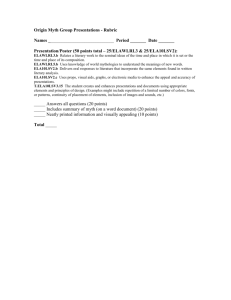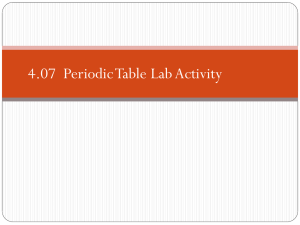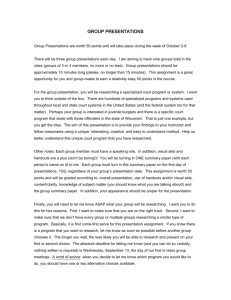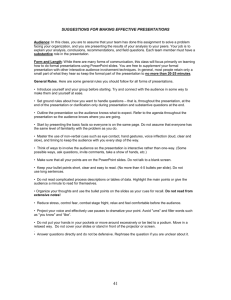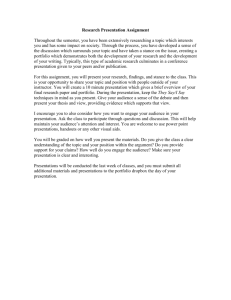Electron Fam Presentation
advertisement
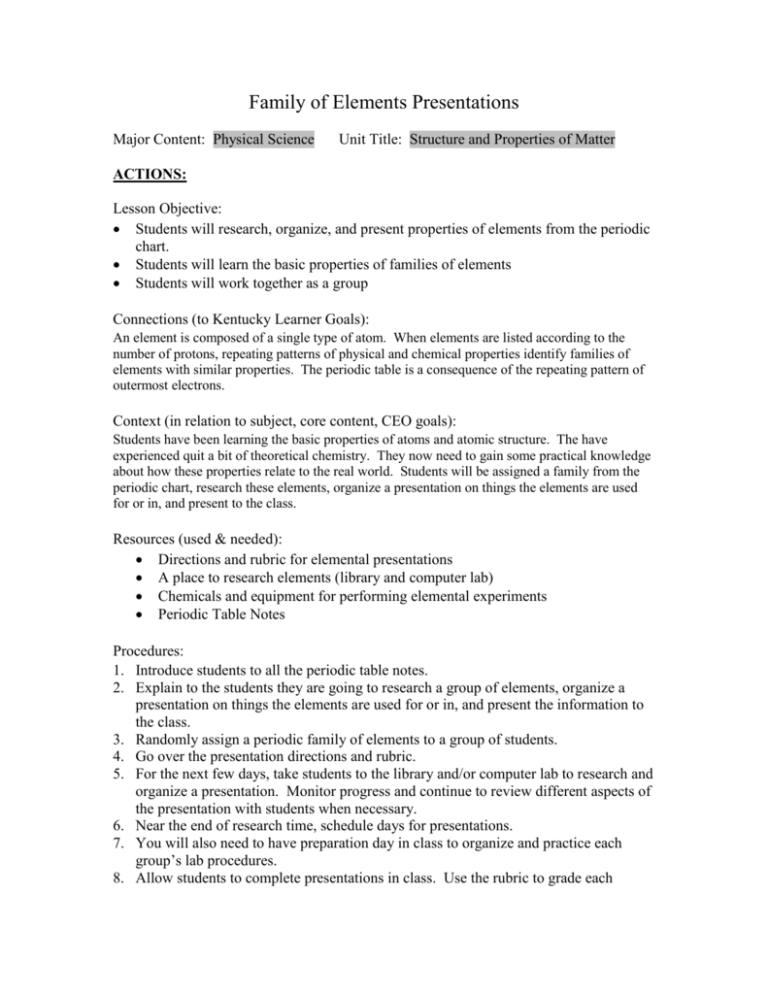
Family of Elements Presentations Major Content: Physical Science Unit Title: Structure and Properties of Matter ACTIONS: Lesson Objective: Students will research, organize, and present properties of elements from the periodic chart. Students will learn the basic properties of families of elements Students will work together as a group Connections (to Kentucky Learner Goals): An element is composed of a single type of atom. When elements are listed according to the number of protons, repeating patterns of physical and chemical properties identify families of elements with similar properties. The periodic table is a consequence of the repeating pattern of outermost electrons. Context (in relation to subject, core content, CEO goals): Students have been learning the basic properties of atoms and atomic structure. The have experienced quit a bit of theoretical chemistry. They now need to gain some practical knowledge about how these properties relate to the real world. Students will be assigned a family from the periodic chart, research these elements, organize a presentation on things the elements are used for or in, and present to the class. Resources (used & needed): Directions and rubric for elemental presentations A place to research elements (library and computer lab) Chemicals and equipment for performing elemental experiments Periodic Table Notes Procedures: 1. Introduce students to all the periodic table notes. 2. Explain to the students they are going to research a group of elements, organize a presentation on things the elements are used for or in, and present the information to the class. 3. Randomly assign a periodic family of elements to a group of students. 4. Go over the presentation directions and rubric. 5. For the next few days, take students to the library and/or computer lab to research and organize a presentation. Monitor progress and continue to review different aspects of the presentation with students when necessary. 6. Near the end of research time, schedule days for presentations. 7. You will also need to have preparation day in class to organize and practice each group’s lab procedures. 8. Allow students to complete presentations in class. Use the rubric to grade each group. You may want to video the presentations. Student Assessment: Students will be assessed for understanding during the lesson through observation. Students will also be assessed according to the presentation rubric during presentations. IMPACT: This is a good lesson. It allows the students to gain some real knowledge of elements. In addition, the students gained experience researching and presenting new material. The presentations were fabulous. Most students did a great job researching and presenting material. In addition, students were able to listen to a tremendous amount of information in relation to many common elements of the periodic table. REFINMENT: (Extension/Follow-up) This is a good lesson, but it takes a tremendous amount of time. The refinement needed for this lesson is all the little things that will come in time. That is the checking and double checking of students’ progress. Many students have not acquired the skills necessary to pull of this type of a presentation. It is my job to monitor them in order to keep them on schedule. In the future it will be nice to have some video examples to show the students.
